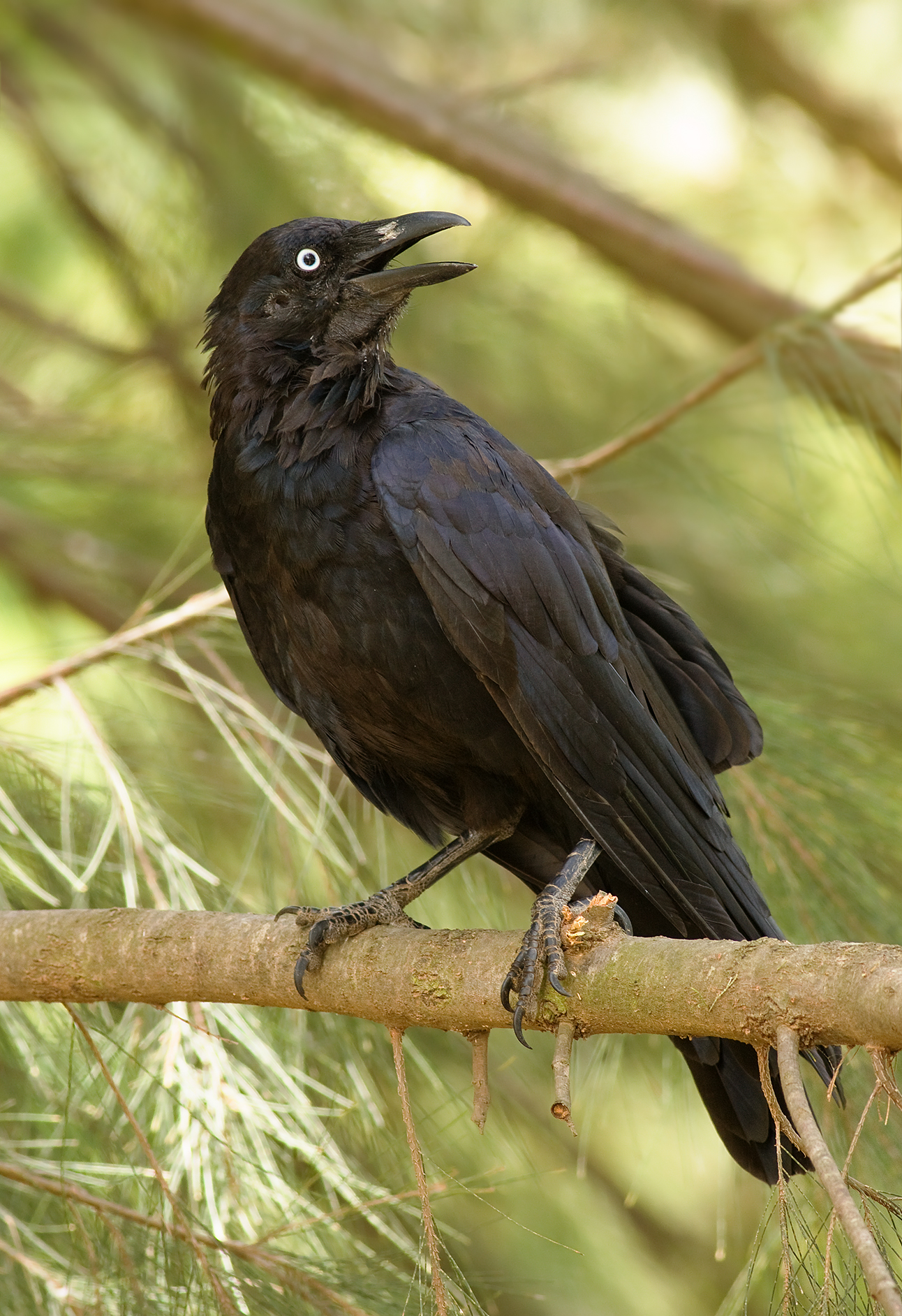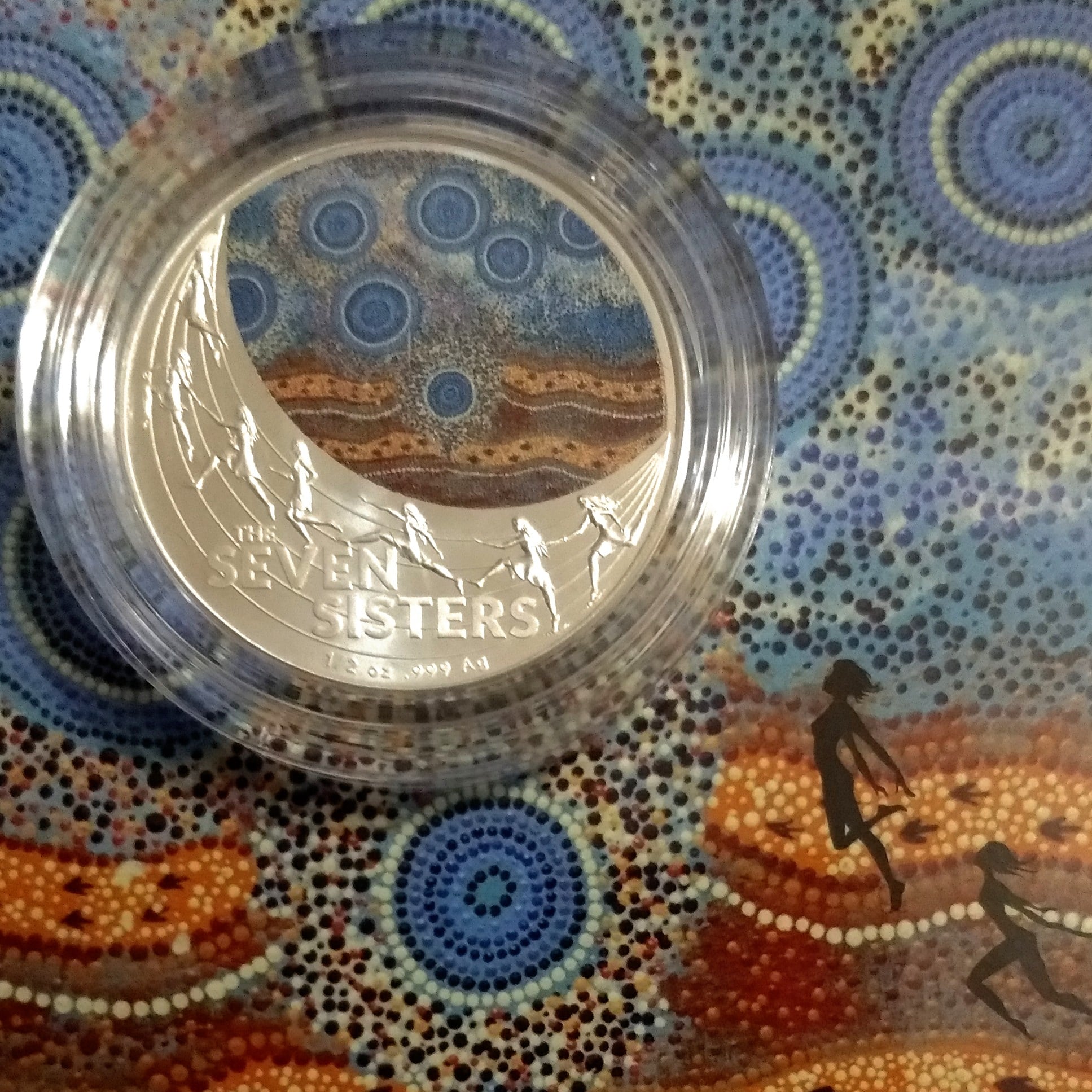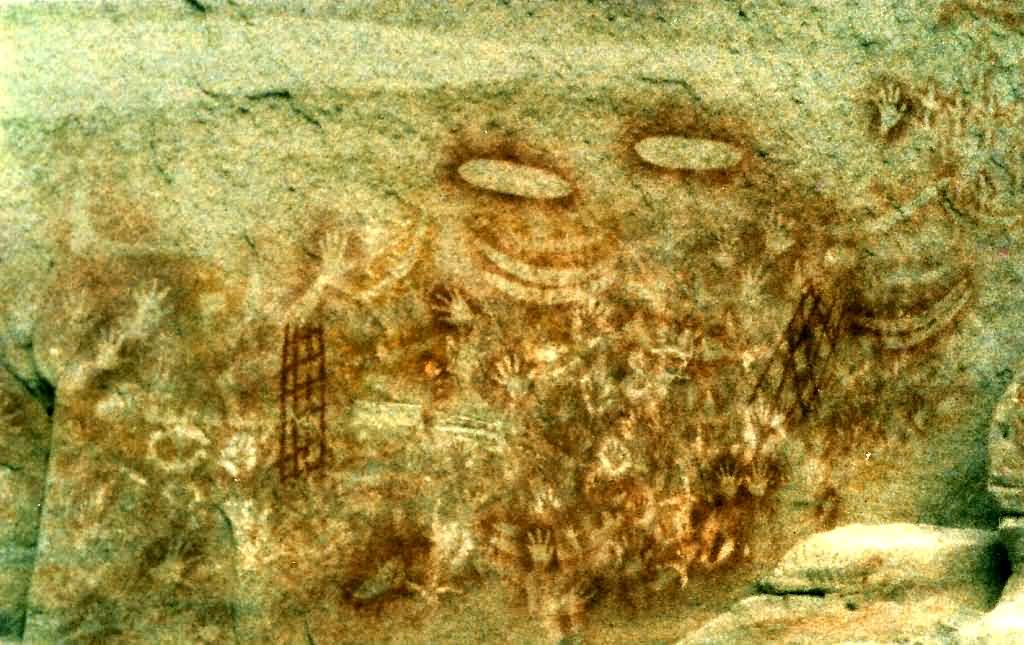|
Karatgurk
In the Australian Aboriginal mythology of the Aboriginal people of south-eastern Australian state of Victoria, the Karatgurk were seven sisters who represented the constellation known in western astronomy as the Pleiades. According to a legend told by the Wurundjeri people of the Kulin nation, in the Dreamtime the Karatgurk alone possessed the secret of fire. Each one carried a live coal on the end of her digging stick, allowing them to cook the yams (murnong) which they dug out of the ground. The sisters refused to share their coals with anybody, however they were ultimately tricked into giving up their secret by Crow. After burying a number of snakes in an ant mound, Crow called the Karatgurk women over, telling them that he had discovered ant larvae which were tastier than yams. The women began digging, angering the snakes, which attacked. Shrieking, the sisters struck the snakes with their digging sticks, hitting them with such force that the live coals flew off. Crow, who had ... [...More Info...] [...Related Items...] OR: [Wikipedia] [Google] [Baidu] |
Crow (Australian Aboriginal Mythology)
In Australian Aboriginal religion and mythology, Crow is a trickster, culture hero and ancestral being. In the Kulin nation in central Victoria he is known as Waang (also Wahn or Waa) and is regarded as one of two moiety ancestors, the other being the more sombre eaglehawk Bunjil. Legends relating to Crow have been observed in various Aboriginal language groups and cultures across Australia. Crow steals fire One common Aboriginal Dreamtime story features Crow's role in bringing fire to mankind. According to oral storytelling by the Wurundjeri people of the Kulin nation, in the Dreamtime fire had been a jealously-guarded secret of the seven Karatgurk women who lived by the Yarra River where Melbourne now stands. These women carried live coals on the ends of their digging sticks, allowing them to cook Murnong yams. One day Crow found a cooked yam and, finding it tastier than the raw vegetables he had been eating, decided he would cook his food from then on. However, the Karatg ... [...More Info...] [...Related Items...] OR: [Wikipedia] [Google] [Baidu] |
Australian Aboriginal Astronomy
Australian Aboriginal astronomy is a name given to Aboriginal Australian culture relating to astronomical subjects – such as the Sun and Moon, the stars, planets, and the Milky Way, and their motions on the sky. Traditional Aboriginal culture and mythology and religion include many components of astronomy, and these traditions have been passed down orally, through ceremonies, and in their artwork of many kinds. The astronomical systems passed down thus show a depth of understanding of the movement of celestial objects which allowed them to use them as a practical means for creating calendars and for navigating across the continent and waters of Australia. There is a diversity of astronomical traditions in Australia, each with its own particular expression of cosmology. However, there appear to be common themes and systems between the groups. Due to the long history of Australian Aboriginal astronomy, the Aboriginal peoples have been described as "world's first astrono ... [...More Info...] [...Related Items...] OR: [Wikipedia] [Google] [Baidu] |
Australian Aboriginal Mythology
Australian Aboriginal religion and mythology is the sacred spirituality represented in the stories performed by Aboriginal Australians within each of the Aboriginal Australian languages, language groups across Australia in their Aboriginal ceremonies, ceremonies. Aboriginal spirituality includes The Dreaming, the Dreamtime (''the Dreaming''), songlines, and Aboriginal oral literature. Aboriginal spirituality often conveys descriptions of each group's local cultural landscape, adding meaning to the whole country's topography from oral history told by ancestors from some of the earliest recorded history. Most of these spiritualities belong to specific groups, but some span the whole continent in one form or another. Antiquity An Australian Linguistics, linguist, R. M. W. Dixon, recording Aboriginal myths in their original languages, encountered coincidences between some of the landscape details being told about within various myths, and Hard science, scientific discoveries bein ... [...More Info...] [...Related Items...] OR: [Wikipedia] [Google] [Baidu] |
Aboriginal Australians
Aboriginal Australians are the various Indigenous peoples of the Australian mainland and many of its islands, such as Tasmania, Fraser Island, Hinchinbrook Island, the Tiwi Islands, and Groote Eylandt, but excluding the Torres Strait Islands. The term Indigenous Australians refers to Aboriginal Australians and Torres Strait Islanders collectively. It is generally used when both groups are included in the topic being addressed. Torres Strait Islanders are ethnically and culturally distinct, despite extensive cultural exchange with some of the Aboriginal groups. The Torres Strait Islands are mostly part of Queensland but have a separate governmental status. Aboriginal Australians comprise many distinct peoples who have developed across Australia for over 50,000 years. These peoples have a broadly shared, though complex, genetic history, but only in the last 200 years have they been defined and started to self-identify as a single group. Australian Aboriginal identity has cha ... [...More Info...] [...Related Items...] OR: [Wikipedia] [Google] [Baidu] |
Victoria, Australia
Victoria is a state in southeastern Australia. It is the second-smallest state with a land area of , the second most populated state (after New South Wales) with a population of over 6.5 million, and the most densely populated state in Australia (28 per km2). Victoria is bordered by New South Wales to the north and South Australia to the west, and is bounded by the Bass Strait to the south (with the exception of a small land border with Tasmania located along Boundary Islet), the Great Australian Bight portion of the Southern Ocean to the southwest, and the Tasman Sea (a marginal sea of the South Pacific Ocean) to the southeast. The state encompasses a range of climates and geographical features from its temperate coastal and central regions to the Victorian Alps in the northeast and the semi-arid north-west. The majority of the Victorian population is concentrated in the central-south area surrounding Port Phillip Bay, and in particular within the metropolitan area ... [...More Info...] [...Related Items...] OR: [Wikipedia] [Google] [Baidu] |
Constellation
A constellation is an area on the celestial sphere in which a group of visible stars forms Asterism (astronomy), a perceived pattern or outline, typically representing an animal, mythological subject, or inanimate object. The origins of the earliest constellations likely go back to prehistory. People used them to relate stories of their beliefs, experiences, creation myth, creation, or mythology. Different cultures and countries adopted their own constellations, some of which lasted into the early 20th century before today's constellations were internationally recognized. The recognition of constellations has changed significantly over time. Many changed in size or shape. Some became popular, only to drop into obscurity. Some were limited to a single culture or nation. The 48 traditional Western constellations are Greek. They are given in Aratus' work ''Phenomena'' and Ptolemy's ''Almagest'', though their origin probably predates these works by several centuries. Constellation ... [...More Info...] [...Related Items...] OR: [Wikipedia] [Google] [Baidu] |
Pleiades
The Pleiades (), also known as The Seven Sisters, Messier 45 and other names by different cultures, is an asterism and an open star cluster containing middle-aged, hot B-type stars in the north-west of the constellation Taurus. At a distance of about 444 light years, it is among the nearest star clusters to Earth. It is the nearest Messier object to Earth, and is the most obvious cluster to the naked eye in the night sky. It is also observed to house the reflection nebula NGC 1432, an HII Ionized region. The cluster is dominated by hot blue luminous stars that have formed within the last 100 million years. Reflection nebulae around the brightest stars were once thought to be left over material from their formation, but are now considered likely to be an unrelated dust cloud in the interstellar medium through which the stars are currently passing. This dust cloud is estimated to be moving at a speed of approximately 18 km/s relative to the stars in the cluster. Computer sim ... [...More Info...] [...Related Items...] OR: [Wikipedia] [Google] [Baidu] |
Wurundjeri
The Wurundjeri people are an Australian Aboriginal people of the Woiwurrung language group, in the Kulin nation. They are the Traditional Owners of the Birrarung (Yarra River) Valley, covering much of the present location of Narrm (Melbourne). They continue to live in this area and throughout Australia. They were called the Yarra tribe by early European colonists. The Wurundjeri Tribe Land and Compensation Cultural Heritage Council was established in 1985 by Wurundjeri people. Ethnonym According to the early Australian ethnographer Alfred William Howitt, the name Wurundjeri, in his transcription ''Urunjeri'', refers to a species of eucalypt, ''Eucalyptus viminalis'', otherwise known as the manna or white gum, which is common along Birrarung. Some modern reports of Wurundjeri traditional lore state that their ethnonym combines a word, ''wurun'', meaning ''Manna Gum'' and ''djeri'', a species of grub found in the tree, and take the word therefore to mean "Witchetty Grub People ... [...More Info...] [...Related Items...] OR: [Wikipedia] [Google] [Baidu] |
Kulin Nation
The Kulin nation is an alliance of five Aboriginal nations in south central Victoria, Australia. Their collective territory extends around Port Phillip and Western Port, up into the Great Dividing Range and the Loddon and Goulburn River valleys. Before British colonisation, the tribes spoke five related languages. These languages are spoken by two groups: the Eastern Kulin group of Woiwurrung, Boonwurrung, Taungurung and Ngurai-illam-wurrung; and the western language group of just Wathaurung. The central Victoria area has been inhabited for an estimated 40,000 years before European settlement. At the time of British settlement in the 1830s, the collective populations of the Woiwurrung, Boonwurrung and Wathaurong tribes of the Kulin nation was estimated to be under 20,000. The Kulin lived by fishing, cultivating murnong (also called yam daisy; ''Microseris'') as well as hunting and gathering, and made a sustainable living from the rich food sources of Port Phillip and the sur ... [...More Info...] [...Related Items...] OR: [Wikipedia] [Google] [Baidu] |
Dreamtime
The Dreaming, also referred to as Dreamtime, is a term devised by early anthropologists to refer to a religio-cultural worldview attributed to Australian Aboriginal mythology, Australian Aboriginal beliefs. It was originally used by Francis James Gillen, Francis Gillen, quickly adopted by his colleague Walter Baldwin Spencer, Baldwin Spencer and thereafter popularised by A. P. Elkin, who, however, later revised his views. The Dreaming is used to represent Aboriginal concepts of ''Everywhen'', during which the land was inhabited by ancestral figures, often of heroic proportions or with supernatural abilities. These figures were often distinct from gods, as they did not control the material world and were not worshipped but only reverence (emotion), revered. The concept of the Dreamtime has subsequently become widely adopted beyond its original Australian context and is now part of global popular culture. The term is based on a rendition of the Arandic languages, Arandic word '' ... [...More Info...] [...Related Items...] OR: [Wikipedia] [Google] [Baidu] |
Digging Stick
A digging stick, sometimes called a yam stick, is a wooden implement used primarily by subsistence-based cultures to dig out underground food such as roots and tubers, tilling the soil, or burrowing animals and anthills. It is a term used in archaeology and anthropology to describe similar implements, which usually consists of little more than a sturdy stick which has been shaped or sharpened and sometimes hardened by being placed temporarily in a fire. Fashioned with handles for pulling or pushing, it forms a prehistoric plough, and is also described as a type of hoe. Digging sticks more than 170,000 years old, made of boxwood by Neanderthals, have been found in Italy. By region Americas In Mexico and the Mesoamerican region, the digging stick was the most important agricultural tool throughout the region. The ''coa'' stick normally flares out into a triangle at the end and is used for cultivating maize. It is still used for agriculture in some indigenous communities, w ... [...More Info...] [...Related Items...] OR: [Wikipedia] [Google] [Baidu] |
Microseris Lanceolata
''Microseris lanceolata'' is an Australian alpine herb with yellow flowers and one of three plants known as murnong or yam daisy along with ''Microseris scapigera'' and ''Microseris walteri.'' The plant is found in southern parts of Australia, including Victoria, NSW and ACT. In Victoria, the plant is confined to alpine and subalpine herbfields of the eastern ranges, and often locally plentiful. ''Microseris walteri'' and ''Microseris scapigera'' are found in lower altitude areas. Commercial plant nurseries will often mislabel a ''Microseris scapigera'' plant with the name of ''Microseris lanceolata'', because the binomial name was only clarified in recent years. Literature about Murnong often misidentifies ''Microseris lanceolata'' as having a sweet-tasting tuber, but this refers to the ''Microseris walteri'' plant. Botanical naming For more than 30 years murnong was named as ''Microseris'' sp. or ''Microseris lanceolata'' or ''Microseris scapigera''. Royal Botanic Gar ... [...More Info...] [...Related Items...] OR: [Wikipedia] [Google] [Baidu] |








